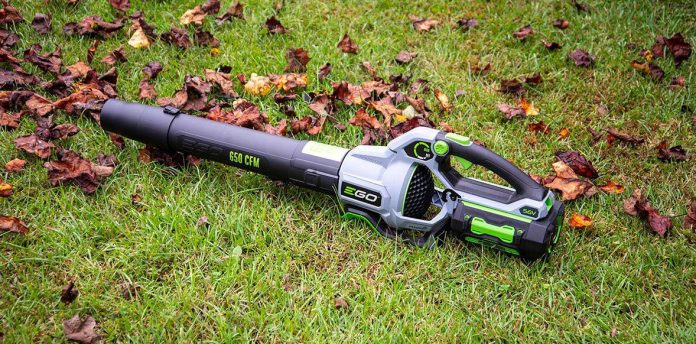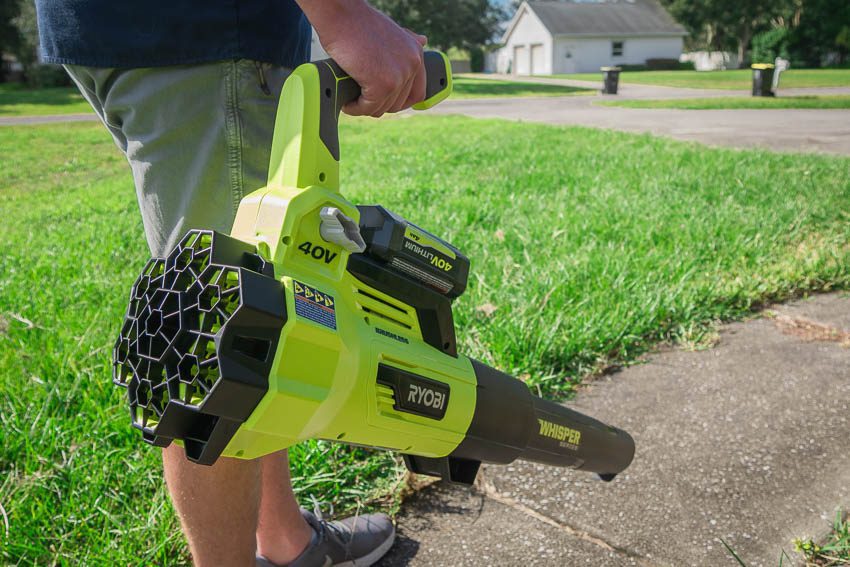Have you ever experienced the frustration of eagerly grabbing your electric leaf blower only to have it continuously trip the circuit?
It’s a common problem many of us have faced, and in this article, we’ll explore the reasons behind this irritating issue.
We’ll uncover the potential causes for your leaf blower’s circuit trips and provide some helpful tips to keep your electric leaf blower running smoothly. Stay tuned, and say goodbye to circuit interruptions!
Possible Causes of Circuit Tripping
Circuit tripping can be a frustrating issue to deal with, especially if it keeps happening repeatedly. There can be several reasons why your electric leaf blower keeps tripping the circuit. It’s important to understand these possible causes so that you can take appropriate measures to resolve the problem.
Electrical Overload
One of the most common causes of circuit tripping is electrical overload. This happens when the electrical circuit is overloaded with more power demand than it can handle. The leaf blower requires a certain amount of power to operate, and if it exceeds the capacity of the circuit, it can cause the circuit breaker to trip.
Damaged Power Cord
Another potential cause of circuit tripping is a damaged power cord. Over time, power cords can become frayed, cracked, or damaged, leading to electrical issues. If you notice any signs of damage to your leaf blower’s power cord, it’s essential to address it promptly to prevent further electrical problems.
Faulty Motor
A faulty motor can also be a culprit behind circuit tripping. If the motor of your leaf blower is not functioning correctly, it can draw too much power and overload the circuit. Regular maintenance and inspection of the motor can help identify any issues and prevent circuit tripping.
Short Circuit
A short circuit occurs when there is a direct connection between the hot and neutral wires, bypassing the intended circuit path. This can happen due to damaged wiring or faulty electrical components. Short circuits can cause the circuit breaker to trip as a safety measure.
Inadequate Power Supply
Sometimes, the problem lies with the power supply itself. If your electrical system is not providing enough power to meet the demands of your leaf blower, it can lead to circuit tripping. Inadequate power supply can be caused by outdated electrical systems or undersized wiring.
Electrical Overload
Understanding Electrical Overload
Electrical overload occurs when the amount of power drawn from a circuit exceeds its capacity. Each electrical circuit has a specific amperage rating, representing the maximum current it can safely handle. If the combined power demand of all devices connected to the circuit exceeds this rating, the circuit breaker will trip to prevent overheating, damage, or even fire hazards.
Blower’s Power Consumption
To avoid electrical overload, it’s essential to know the power consumption of your leaf blower. This information is usually provided in the blower’s user manual or on the appliance itself. It’s crucial to ensure that the power demand of the blower does not exceed the capacity of the circuit it is connected to.
Simultaneous Use of Other High-Powered Devices
Another factor that can contribute to electrical overload is the simultaneous use of other high-powered devices on the same circuit. For example, suppose you are running the leaf blower while other appliances like a vacuum cleaner or a microwave oven also draw power from the same circuit. In that case, it can exceed the circuit’s capacity and lead to tripping.
Damaged Power Cord
Signs of a Damaged Power Cord
A damaged power cord can be hazardous and can also cause circuit tripping. Look for signs of damage, such as frayed or exposed wires, cracks or breaks in the insulation, or loose connections. If you notice any signs, addressing them promptly for safety reasons is essential.
Replacing the Power Cord
Replacing a damaged power cord is relatively simple and can be done by following the manufacturer’s instructions. It’s crucial to use a power cord that meets your leaf blower’s voltage and amperage requirements. An incorrect or incompatible power cord can lead to further electrical issues or accidents.
Professional Repair or Replacement
In some cases, if the power cord damage is extensive or you’re unsure about DIY replacement, it’s best to seek professional help. An electrician or a qualified repair technician can assess the damage and either repair or replace the power cord to ensure your leaf blower’s safe and efficient operation.
Faulty Motor
Symptoms of a Faulty Motor
A faulty motor can be a primary culprit behind circuit tripping issues. Some common symptoms of a faulty motor include overheating, unusual noises, erratic performance, or a complete failure to start. If you notice any of these signs, addressing the motor issue is essential to prevent further damage to both the motor and the electrical system.
Motor Maintenance and Inspection
Regular maintenance and inspection of the leaf blower’s motor can help detect and prevent motor-related issues. It’s essential to follow the manufacturer’s guidelines for motor maintenance, including cleaning, lubrication, and checking for any loose or damaged parts. Regular inspection can also help identify potential problems before they lead to circuit tripping.
Repairing or Replacing the Motor
If the motor is found to be faulty, it may need to be repaired or replaced. Depending on the extent of the damage and the availability of spare parts, you can either attempt a DIY repair or seek professional help. Repairing or replacing a motor should only be done by someone with the necessary skills and expertise to ensure safety and proper functionality.
Short Circuit
Understanding Short Circuits
A short circuit occurs when there is an unintended path for the electrical current to flow, bypassing the standard circuit wiring. This can happen due to damaged insulation, loose connections, or faulty electrical components. Short circuits can cause excessive current flow, leading to overheating, circuit tripping, and electrical fires.
Identifying Short Circuit Issues
Identifying the source of a short circuit can be challenging and may require professional assistance. However, a few signs can indicate a short circuit issue. These include frequent circuit tripping, sparks or smoke from the electrical outlet or appliance, or the characteristic smell of burning wires. If you notice any of these signs, addressing the issue promptly is essential.
Fixing a Short Circuit
Fixing a short circuit can be complicated and should be done by a qualified electrician. They will first identify the cause of the short circuit and then take appropriate measures to repair or replace the damaged wiring or component. It’s crucial to avoid attempting a DIY fix for short circuit issues, as it can lead to further damage or even electrical hazards.
Inadequate Power Supply
Checking Power Supply Specifications
If your leaf blower is consistently causing circuit tripping, it’s essential to check the power supply specifications. This includes ensuring that the electrical system provides enough voltage and amperage to meet the demand for the leaf blower. An undersized or outdated electrical system may not be able to handle the power requirements, leading to circuit overloading and tripping.
Using Extension Cords
Sometimes, using extension cords to connect the leaf blower to a different power source can help resolve inadequate power supply issues. However, it’s essential to use high-quality, heavy-duty extension cords that are rated for the power requirements of the leaf blower. Using low-quality or improper extension cords can lead to voltage drops, overheating, and circuit tripping.
Upgrading Electrical System
If the power supply issue is persistent and cannot be resolved with extension cords, it may be necessary to upgrade the electrical system. This can involve replacing outdated wiring, upgrading the circuit breaker panel, or even rewiring the electrical system. A qualified electrician should always upgrade the electrical system to ensure compliance with safety standards and regulations.
Preventive Measures
Proper Maintenance
Regular maintenance of your leaf blower is critical to preventing circuit-tripping issues. This includes cleaning the blower, inspecting the power cord for damage, checking and tightening any loose connections, and lubricating moving parts of the motor. Keeping your leaf blower in good working condition can minimize the risk of electrical problems and circuit tripping.
Avoiding Overloads
To prevent circuit overloads, it’s essential to be mindful of the power demands of your leaf blower and other devices connected to the same circuit. Avoid using high-powered devices simultaneously, especially if they have a significant power draw. Distribute the power demand across different circuits to prevent overload situations.
Ensuring Proper Power Supply
Ensure your leaf blower is connected to a power source that adequately meets its power requirements. Avoid using multiple extension cords or daisy-chaining power strips, which can lead to voltage drops and circuit tripping. If you’re unsure about the power supply of a particular outlet or circuit, consult a qualified electrician to ensure safety and proper functionality.
When to Seek Professional Help
Dangerous Electrical Situations
If you encounter any dangerous electrical situations, such as sparks, smoke, burning smells, or electrical shocks, you must seek professional help immediately. These signs may indicate more serious underlying electrical issues that could pose a safety hazard. Please do not attempt to fix these issues alone, as it can lead to personal injury or damage to your electrical system.
Complex Repairs
If the cause of the circuit tripping is not apparent or requires complex repairs, it’s best to consult a qualified electrician. They have the expertise and knowledge to identify and address intricate electrical issues. Attempting complex repairs without proper training and understanding of electrical systems can be dangerous and lead to further damage or electrical hazards.
Manufacturer or Expert Assistance
In some instances, it may be necessary to seek assistance from the manufacturer or an expert in the field. This is particularly relevant if your leaf blower is still under warranty or if the circuit tripping issue persists despite attempts to resolve it. Manufacturers or experts can provide specific troubleshooting guidance or recommend appropriate solutions.
Conclusion
Circuit tripping can be a frustrating problem when using an electric leaf blower. By understanding the possible causes and taking appropriate preventive measures, you can minimize the occurrence of circuit tripping and ensure your leaf blower’s safe and efficient operation.
Regular maintenance, careful power management, and seeking professional help are crucial to resolving and preventing circuit-tripping issues. Electrical safety should always be a priority to protect yourself, your equipment, and your home.



































